The best curriculum we've reviewed all year as part of the Schoolhouse Review Crew is the Deluxe Combo Teacher/Student Writing Package Level A [Fix-1 and 2] from the Institute for Excellence in Writing (IEW). We received the updated second edition of IEW's Teaching Writing: Structure and Style (TWSS) and the Student Writing Intensive (SWI) Level A curriculum in this package. Additionally, we were given Fix It! Grammar, A Word Write Now, and a Portable Wall folder to review. Furthermore, we also gained access to a one-year Premium Subscription of e-resources and audio clips. All of these items are included in this package so that you have everything at your fingertips when teaching writing!
How We Used It
I used this package with my daughter, Alyssa (Age 7 1/2) who is working at a 3rd-5th grade level. She has writing experience and has been taught basic grammar skills. I was overwhelmed by the curriculum and the number of products I received, but that feeling soon disappeared after becoming familiar with their philosophy.
This writing and grammar curriculum did require a moderate amount of teacher prep time in the beginning. I set-up the student notebook as directed in the handout instructions. I read the detailed Teacher Notes, glanced at the yearly Scope and Sequence, and viewed the Suggested Course Schedule. I read all of Unit 1 and 2's content. I set aside an hour+ to watch the teacher DVD session about the first structural model. I only watched one disc at a time so that I wouldn't get too overwhelmed with the task.
Having the content available online through the subscription made it easier. The primary and elementary student demonstrative lessons for Grades K-5 found on DVD disc 10 were also watched. More prep is required prior to the first teaching day and then the amount of prep time decreased over time. You may need to eventually find your own interest-based source texts at or below your child's grade level. However, the articles provided have worked for us so far.
The TWSS was used in conjunction with the SWI Level A. SWI Level A was used on a daily basis (5 times per week) for approximately 45 minutes to 1 1/2 hours. We integrated it into other subjects by utilizing content text resources from History, Science, and Literature. The Deluxe Combination package replaced my pieced together writing curricula and became our core program.
I used this package with my daughter, Alyssa (Age 7 1/2) who is working at a 3rd-5th grade level. She has writing experience and has been taught basic grammar skills. I was overwhelmed by the curriculum and the number of products I received, but that feeling soon disappeared after becoming familiar with their philosophy.
This writing and grammar curriculum did require a moderate amount of teacher prep time in the beginning. I set-up the student notebook as directed in the handout instructions. I read the detailed Teacher Notes, glanced at the yearly Scope and Sequence, and viewed the Suggested Course Schedule. I read all of Unit 1 and 2's content. I set aside an hour+ to watch the teacher DVD session about the first structural model. I only watched one disc at a time so that I wouldn't get too overwhelmed with the task.
Having the content available online through the subscription made it easier. The primary and elementary student demonstrative lessons for Grades K-5 found on DVD disc 10 were also watched. More prep is required prior to the first teaching day and then the amount of prep time decreased over time. You may need to eventually find your own interest-based source texts at or below your child's grade level. However, the articles provided have worked for us so far.
The TWSS was used in conjunction with the SWI Level A. SWI Level A was used on a daily basis (5 times per week) for approximately 45 minutes to 1 1/2 hours. We integrated it into other subjects by utilizing content text resources from History, Science, and Literature. The Deluxe Combination package replaced my pieced together writing curricula and became our core program.
We used the Fix It! Grammar curriculum 5 times per week for approximately 10-15 minutes a day. Fix It's were marked on a daily basis for four days. Every Friday (fifth day), Alyssa read the entire story that was handwritten up to that point. She decided to create illustrations for each paragraph in the story. My daughter eventually wants to type it up and include her illustrations to make a storybook. Fix It! Grammar was used as our primary grammar curriculum.
This package is bundled in a 3-ring binder for the parent of K-12th grade children. TWSS explains how to teach the nine structural models using a classical approach in which the teacher models the proper writing techniques. It is the backbone or foundation of the entire program. It can be used separately if desired, but I highly recommend pairing it with a Student Writing Intensive level. The IEW philosophy is discussed in depth on the videos as Pudewa teaches a live parent class using structured lessons in a classroom setting.
Nine Structural Models Addressed
- Note Making and Outlines
- Writing from Notes
- Retelling Narrative Stories
- Summarizing a Reference
- Writing from Pictures
- Summarizing Multiple References
- Inventive Writing
- Formal Essay Models
- Formal Critique
The teacher seminar practicum workbook is basically a syllabus which contains word lists, sample lesson plans, and writing charts. Plenty of space is given for personal notes and practicum exercises. The binder is tabbed with dividers for each of the nine units. Each unit lists the goals, recommended materials, teaching procedure, grade level adjustments, thumbnail diagrams, teacher helps, answers to commonly asked questions, student samples and checklists, and available blackline masters. Download instructions for the 240-page Practicum Workbook Blackline Masters ebook can be found on the blue sheet at the beginning of the TWSS binder.
There is a Writing About Literature section, a tab for Stylistic Techniques, and an appendix. Twelve helpful articles are provided in the appendix containing practical information, teacher tips, and advise related to teaching the art of writing. Topics such as public speaking, marking and grading, plagiarism and citations, and converting to pens are included. Some articles may refer you to the MP3 audio talk. The "Convert to Pens" article is a great read.
A Premium Subscription includes access to the 14+ hour streamed TWSS course divided into individualized clips, 5 hours of student demonstrative lessons, access to monthly training seminars, audio MP3's of conference talks, and digital PDF e-resource downloads for one-year. A large card is included in the package with a code to access your subscription.
I loved that I could stream the video online from the computer or watch the DVD's on the television. I could listen to the informative presentation in my pajamas. I only watched the content required for each lesson. The 1-2 hour sessions contained relevant and meaningful teaching tips and insightful advice on how to teach writing.
I appreciated the EZ+1 tip and loved that Andrew Pudewa emphasized that not all stylistic techniques must be taught all at once. He encourages parents to teach dress-ups at a slower pace. He helped me realize the importance of keeping spelling and neat handwriting lessons separate from Alyssa's writing curriculum. He also states that children who dislike writing can type their papers or can use pens! Pudewa compared teaching and learning how to write to a violin lesson. Children aren't expected to create an original composition from their heads the first day. They practice by rewriting texts or musical pieces written by others.
The Writing Source Packet and Mini Posters included in the premium subscription are outstanding supplements. We hung the mini posters up on the living room wall to use as a reference when necessary. The Writing Source Packet has extra source texts which provided us with a interesting variety of topics.
Student Writing Intensive (SWI) Level A is geared towards students in 3rd-5th grade. This is the student instructional portion of the curriculum taught by Andrew Pudewa, which takes 15-30 weeks to complete, depending on how long you spend working on a particular unit or lesson. Each lesson will take approximately 1-2 weeks to finish. The curriculum includes the DVD set, a 3-ring binder with tabbed dividers, and 100+ handouts for ONE student. The tabs that follow the Key Ideas Page are: Models/Sources/Checklists, Outlines/Compositions, Structural Models, Style Charts, and Banned Words. I placed the extra student handouts in my teacher TWSS binder for future use.
We've only watched the first DVD together so far, but look forward to jumping into story summaries soon. We recently completed the seventh week (Lesson 4) and finished watching the first student disc. We followed the suggested course schedule found at the beginning of the Teacher Notes section. We were ecstatic about starting the first lesson and combined weekly activities into one day. Andrew Pudewa's whiteboard presentations helped us see each step in action. He was funny and engaged Alyssa's attention with his jokes.
Source Text
|
We edited and revised the rough draft together using an informal (non-lecture) conversation. I acted more like an editor than a mom. What's the difference? Pudewa states that, "An editor gives corrections without a lecture attached." He encourages children to hand their paper over to the parent to edit while they complete a few of mom's chores. Occasionally, Alyssa wore her cowgirl editing hat.
Alyssa gave a verbal presentation after writing the final draft. She practiced speaking clearly, not fidgeting, and talking to the audience and not the paper. Here is a photo showing three of the steps in the writing process: KWO, Rough Draft, and Final Draft for the "Pearls" paper.
The Teacher Notes section gave me the structure and organization I needed with regards to lesson planning yet still gave me the freedom I desired with regards to flexibility. I could easily double up lessons. For example, some weeks we would complete a key word outline (KWO) and a rough draft in the same day. On another day, we might write the rough draft and edit/revise it in the same sitting. This opened up a little free writing time. I noticed that if she finished assignments early, Alyssa would enthusiastically ask for extra text sources so she could write another paper. You know the curriculum is a perfect fit if your child wants to write all the time. We explored the contents of the package further and utilized other original text sources in the PDF downloads that we received.
Alyssa wrote many final drafts over the course of 7 weeks which stemmed from original source texts such as Sea Snakes, Desert Tarantula, Pillbug, Starfish, Pearls, Oysters, Stars, The Boy and the Nuts, The Cocks and the Eagle, and In a Nut Shell. The story, "The Boy and the Nuts" was transformed into "The Greedy Girl and the Almonds" after Andrew Pudewa encouraged the students to use their imagination and creativity to change the story a bit.
The curriculum can be easily integrated into other subjects such as Bible, History, Literature, and Science. My daughter utilized the techniques taught to create key word outlines using the video content from an online Science program. Alyssa listened to a factual video about African Elephants and chose three key words from the interesting facts stated aloud. Then, she wrote a rough draft paragraph.
We also integrated the writing ideas into our American History unit study. Alyssa chose a book about the Declaration of Independence and created a key word outline. The final draft was written the next day.
I am very impressed with IEW's curricula package. I couldn't believe how much writing Alyssa did in 7 weeks. The best part was that she wasn't complaining . . . she was asking to write more. Her confidence level exploded and she became comfortable writing across all subjects. She is constantly pointing out "ly" adverbs and telling me when she finds who-which clauses. I catch her rewording paragraphs she reads using dress-ups. I only require Alyssa to have one "-ly" adverb and one who-which clause per paper rather than per paragraph, but most papers have only been one paragraph anyways. My daughter usually tries to add more than one in each paper.
Her writing contains colorful word choices, interesting dress-ups, and stronger sentences. It seems to be more organized and structured yet has more flair and style. She learned how to write a good title by restating the last sentence. We appreciated the fact that composition checklists were included on the back of each source to help evaluate her writing. IEW also added stylistic techniques to the checklist one at a time so it changed as concepts were addressed. The tools taught could be immediately applied to her personal writing.The DVD's kept her attention and Mr. Pudewa engaged her in the writing process with his candid personality. Here is a photo of her first key word outline and rough draft of "Sea Snakes."
Fix It! Grammar: The Nose Tree Teacher's Manual and Student Book 1
This curriculum was created by Pamela White. The entire series is geared towards children in 3rd through 12th grade. I received a downloadable ebook PDF copy of the 126-page student book ($15) as an accompaniment to the 228-page spiral-bound physical copy of the teacher's manual ($19) to review. It contains the exact pages and information as the student book. Teacher notes, answer keys, and a glossary are also added to the manual. There are 33 weekly lesson plans provided in The Nose Tree. Grammar is addressed four days each week. New topics are introduced and taught each week including but not limited to Nouns, Pronouns, Who-Which Clauses, Quotations, and Strong Verbs.
Alyssa's first task was to read the weekly "Learn It" section with me. After reading the daily sentence, she identified and labeled the parts of speech, added punctuation, and copied the corrected sentence in her spiral after we discussed the fixes. The best part about this activity is that each sentence rewrite tells part of a cumulative story that unfolds throughout the year, which means that grammar is taught within the context of a story. One sentence must be read, marked, and rewritten in a spiral each day. The entire weekly lesson could easily be completed in one day for older children or students who've been previously exposed to grammar concepts. Alyssa also learned basic editing marks for capitalization and indentation.
Our Experiences and My Opinion
Alyssa learned both familiar and unfamiliar concepts. We finished the fix it sections for week 7, which covers action verbs (vb). Last week she was introduced to who clauses which was a new concept. We cover a new topic on a weekly basis working four days a week, but older children could easily complete an entire week in one day. Concepts she's learned about so far are nouns, the "their" homophone, end marks, articles, quotations, pronouns, and who-which clauses. Most of these concepts have been a review, but the exercises serve as great practice.
Alyssa reads the entire cumulative story on Fridays. I began with the Nose Tree, because I knew that there were certain concepts presented that I hadn't covered yet and I didn't want any learning gaps should we continue to use it over the years. This is a solid, gentle introduction to grammar that continuously reviews previously learned concepts over the year. Lessons are easy to follow and implement. The format is well organized and straight to the point. Our favorite part is the cumulative story, we are both looking forward to reading the story in its entirety.
This is a 107-page thematic thesaurus for stylized writing written by Loranna Schwacofer. The 3rd edition of this book is divided into 4 categorized sections: Character traits (23), descriptive words, words for movement and senses, and the appendix. A two-page spread covers one word. The words are color-coded by parts of speech or phrases. The book includes famous quotes, excerpts from literature, thoughts, and word definitions. It contains word lists for nouns, noun characters, adjectives, adverbs, and verbs in addition to a space for a personal word list. The appendix contains a preposition list to memorize, transitions, word play, literary genres, and a list of literary device definitions with examples.
We haven't used this resource as much as I hoped yet, but I can see how useful it will be when working with narratives. She used the review period to become more familiar with the organization and layout of the book. When finding a replacement word, she identified the word category first. Alyssa searched for words related to size, movement, thoughts, and the five senses. This valuable tool expands her vocabulary and enables her to choose appropriate word substitutions. We have it out whenever she's editing and revising any rough draft paper. She used the word "speculate" to replace the word "think" in a paper about "Stars."
This is a trifold single pocket folder jam-packed with resources to help children become better writers. There are several lists provided inside the 3-panel folder such as dress-ups, sentence openers, decorations, triple extensions, an "-ly" adverb list and imposters, prepositions, "said" synonyms, and strong verbs. Strong verbs were given for the words "see/saw," "think/thought," "go/went," "like," "eat," and "make." You'll find note and outline forms, a story sequence model, summarizing references, and a writing from pictures graphic organizer on the back of the folder.
This is a sturdy tool to place in a student's writing binder or at their desk for use during writing time. It features major aspects of the curriculum and gives students the tools they need to be successful writers. The colorful folder invites the writer to open and utilize the contents.
My daughter mainly used the notes and outline forms, "-ly" adverbs, the "said" synonym list, and the strong verb word choices when writing. My daughter utilized one of the "strong verbs" from the suggested list for the word "eat" when editing and revising one of her papers. I wish the portable wall folder was three hole-punched and could fit inside the binder without the edges overhanging.
YES! The Deluxe Combo Teacher/Student Writing Package Level A [Fix-1 and 2] from the Institute for Excellence in Writing (IEW) will be my "go to" recommendation to ANY homeschool family that can afford it. It is great for all types of learners. Older and younger children could also benefit from using this program with guidance. This would be a great program to use with writing co-ops too. It will cost $299 to purchase, but it is definitely worth it in the long run and ends up being cost effective over time.
My daughter wasn't a reluctant writer, but I could tell she wasn't 100% confident with it until NOW. No obstacles stop her from writing. In fact, I have a difficult time getting her to take a break. She is excelling with IEW's approach! She likes that she doesn't have to write the paragraphs word-for-word and can write rough drafts messy.
This top-notched curricula is well-organized with thorough explanations of how to support your child as a writer while still allowing for flexibility in lesson planning and scheduling. If you want your child's writing to improve and have a desire to give them the tools they need to become a self-motivated writer, then I would seriously consider investing in one of the the Deluxe Combinations.
The systematic assignments are doable and reasonable in length. You can even split the assignment up into two shorter sessions in one day if needed. Consistent practice leads towards mastery and you can't help your child too much according to Andrew Pudewa.
Social Media
Vimeo
You Tube
Blog
Google +
Visit The Schoolhouse Review Crew blog to read about the experiences of other families using a variety of IEW products. My review for IEW's PAL Reading and Writing Curricula



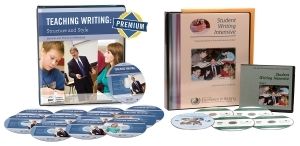

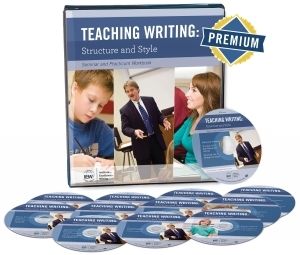





















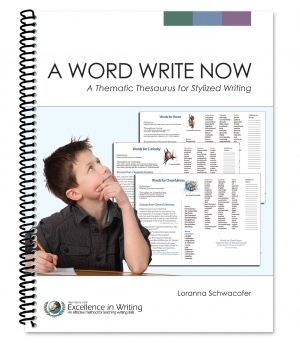

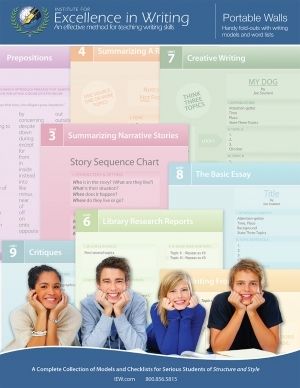





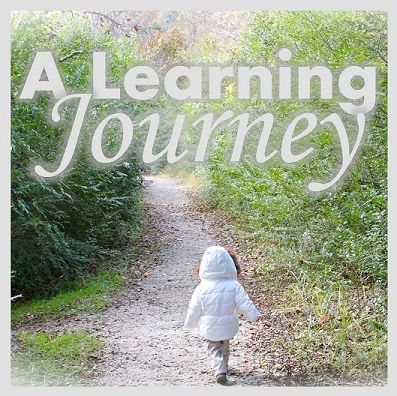














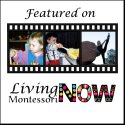






Thank you for this detailed and extremely informative review! I cannot express to you enough how much it has helped me in trying to determine if this curriculum will be a good fit for my daughter and for myself as well. But after reading your reviews and seeing your daughters sweet face so intent in her studies, I don't believe we could go wrong in picking iew as a solid writing/grammar program.
ReplyDeleteThanks again and I think I'll have a look around around here for a bit. :-)
Tina